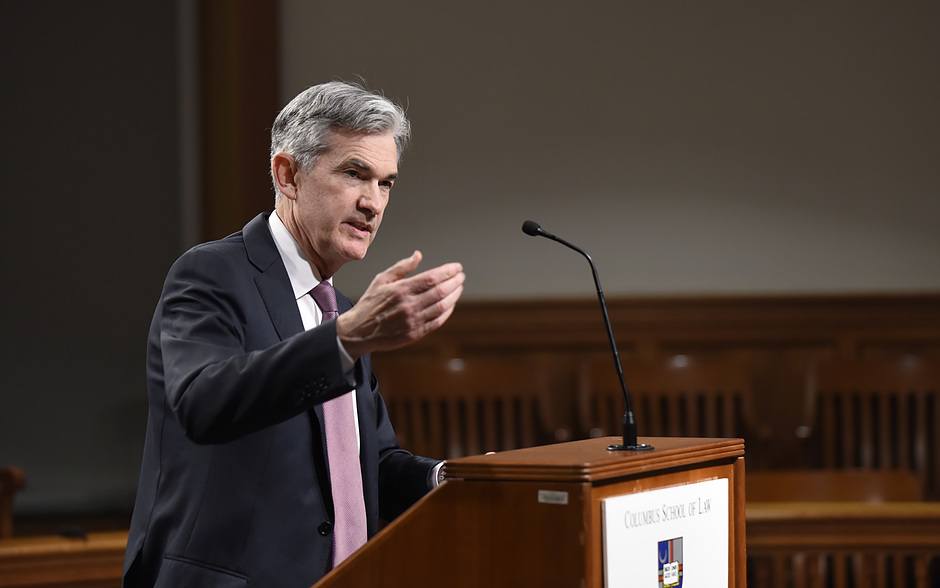Chair Powell echoes the 'higher for longer' mantra

In what could be described as a see-saw session, investors were pulled in different directions by a mix of decent earnings reports, ongoing geopolitical tensions, and a reaffirmation of “ higher for longer.” The S&P 500 wavered on Tuesday following Federal Reserve Chair Jerome Powell's remarks indicating that interest rates may need to remain elevated for some time.
Stocks fluctuated during afternoon trading as Powell struck a more resolute tone, hinting that the Fed might need to stare down the whites of inflation’s eyes in light of ongoing price pressures. The hawkish tone from Powell didn't come as much of a surprise, considering the persistent inflationary challenges, the robust state of the US economy, and the Fed's commitment to data-driven decision-making. Anything short of reaffirming the "higher for longer" would likely have raised even more questions about the Fed's credibility. Still, his acknowledgment of stick price pressures could eventually drive a more pronounced market reaction in the near-term horizon, possibly as part of a broader process that could eventually push the 10-year yield back into the 5% range if the US economic data continues to top expectations.
Regrettably, the "higher for longer" mantra brings the unwelcome side effect of a stronger US dollar wreaking havoc on global markets. Adding fuel to the Greenback surge and sending duelling currency wrecking balls in motion is that the People's Bank of China (PBoC) is thought to have expanded the Yuan’s trading band flexibility following yesterday's fix above 7.10 USDCNY. This development now sends unwelcome shockwaves throughout Asian currencies, notably affecting Asia majors like the Indian Rupee, the Indonesian Rupiah, the Korean Won, the Malaysian Ringgit, and the Japanese Yen. Hence, Asia FX and G-10 traders will be on Yuan Watch over the PBoC fix today.
There's a growing sentiment among some officials that Federal Reserve policy might not be as restrictive as previously assumed. Given the current interest rate environment, this raises questions about the potential for further disinflation.
While the Committee's more hawkish members have refrained from aggressively advocating for another rate hike, investors are beginning to consider this possibility and the potential broader market turmoil that could result from even the remote chance of a hawkish pivot in policy.
The market eagerly awaits any relief from mounting price pressures amidst the backdrop of a red-hot US economy.
In summary, the market landscape has been turbulent following the release of unexpectedly high inflation data last week. Both stocks and bonds have taken a hit, with the S&P 500 experiencing its most significant two-day decline since March 2023, dropping 2.6% over Friday and Monday.
Treasury yields have been on the rise, indicating investor bets that the Federal Reserve may not cut interest rates as aggressively as previously anticipated, or if at all.
Meanwhile, Federal Reserve Chair Jerome Powell highlighted renewed uncertainty regarding the trajectory of interest rates, especially with inflation remaining stubbornly high.
Oil markets
While a strong U.S. dollar is often viewed as a deterrent for oil futures, it's important to note that the factors behind a robust dollar also bolster fuel demand.
The Atlanta Federal Reserve Bank's GDPNow indicator suggests that the U.S. economy expanded at a 2.9% annualized rate in the first quarter. This growth was primarily propelled by consumer and government spending and an expanding labor force.
With the robust US retail sales data in mind, the strength in consumer spending signals positive prospects for driving demand.
Author

Stephen Innes
SPI Asset Management
With more than 25 years of experience, Stephen has a deep-seated knowledge of G10 and Asian currency markets as well as precious metal and oil markets.

















